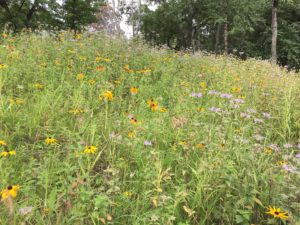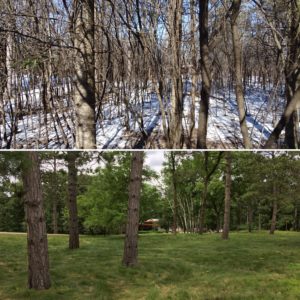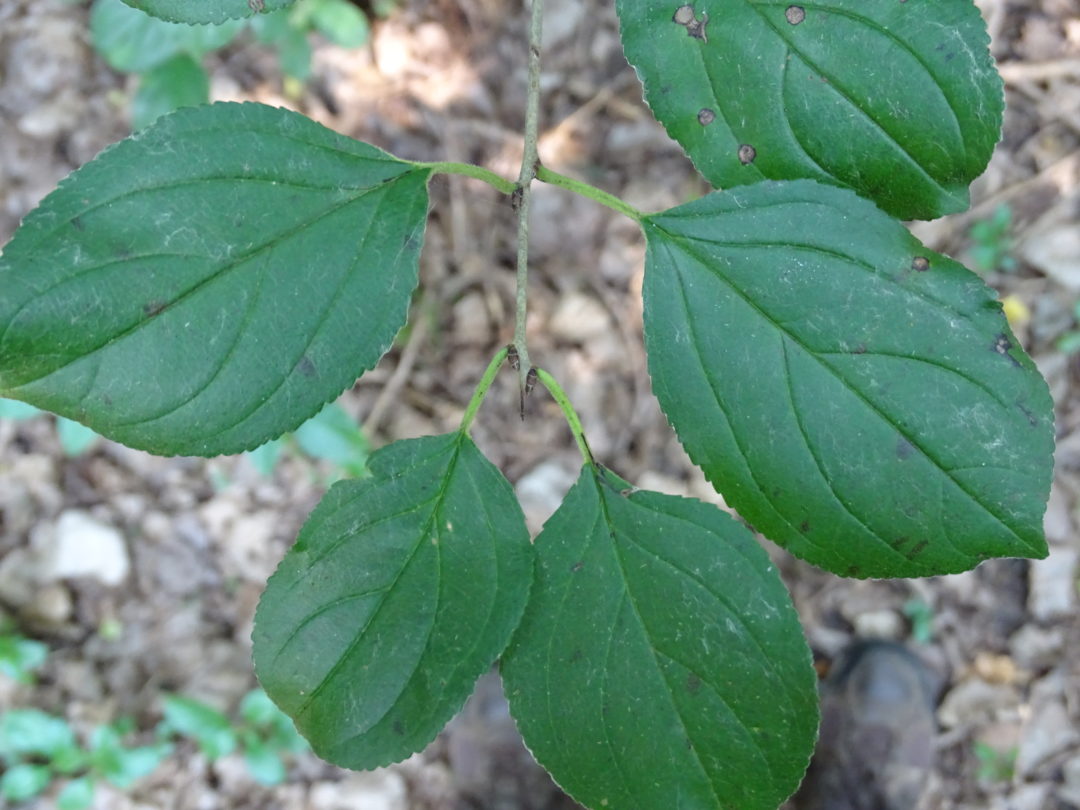Eden Prairie
At Discovery Point, we are working towards increasing plant diversity and improving urban habitat through restoration and continued project maintenance.
Restoration Vision
The District’s vision for Discovery Point is to care for the land by improving urban habitat. We want Discovery Point to be a demonstration site within the District for property owners to learn how to conduct invasive species removal projects, stabilize soils, increase plant diversity in an urban setting, and understand maintenance associated with a habitat restoration project.
Restoration Goals

- To demonstrate the process of invasive species control, native plant establishment, and project maintenance
- To be a teaching site for the regeneration of upland native plant communities
- To demonstrate native landscape management process, techniques, and expenses
- To meet the terms of the MN Land Trust Conservation Easement on the property, which are intended to provide significant public benefit
History of Restoration Work
Habitat restoration began at Discovery Point in February of 2017, and the last phase of work began in April 2021. The project is now in a site-wide maintenance phase. The work was guided by an ecological master plan.
Phase 3
Northwestern Section
The Nine Mile Creek Watershed District completed the final phase of habitat restoration on its property. MNL, the contractor hired to complete this phase, removed buckthorn and other woody invasive species. Select trees were also removed. MNL used a forestry mower for the buckthorn removal work. After buckthorn removal, MNL installed a native seed mix. This work began on April 1, 2021, and was finished the following week. MNL installed fifty shrubs and eighteen trees, completing the habitat restoration in June 2021. This final phase of restoration was done in partnership with the City of Eden Prairie and included buckthorn removal and native seeding on adjacent city property.
Fescue Conversion of Southeastern Section
On May 12, 2021, Red Rock Fire (a MNL company) conducted a small prescribed burn in a 0.4 acre fescue grass area on the southeast part of the District’s property. The purpose of the burn was to prepare the area for a native prairie planting. Permits for the burn were issued by Eden Prairie and the Department of Natural Resources. The area was then seeded with a native seed mix and cover crop the next day.
Watch the video below for an overview of phase 3.
Phase 2
Southwestern Section
- Buckthorn and invasive honeysuckle and select tree removal (completed November 2017)
- Native seeding, tree and shrub planting (completed fall 2018)
- Volunteer plug planting (completed spring 2019)
Phase 1
Southeastern Section

- Buckthorn, invasive honeysuckle and tree removal (completed February 2017, Learn More)
- Seeding of native mix and no-mow fescue and tree/shrub planting (completed May & June 2017)
- Native plug planting (completed June 2018)
North of Parking Lot
- Buckthorn removal (completed October 2016 and 2017 by volunteers)
- Fescue (no-mow) grass seeding (completed May 2017)
Weir Area/City Trail Connection
- Buckthorn removal (completed February 2017)
- Tree and shrub planting (completed June 2017)
- Split-rail fence installation to define the connection between the city trail and Discovery Point (completed April 2017)
Whole Site
- Control of noxious invasive weeds, including garlic mustard, narrowleaf bittercress, and buckthorn resprouts (ongoing)
Learn More: Discovery Point Ecological Master Plan_2021
What was planted?
Since 2014, the District has planted more than 300 shrubs and 100 trees at Discovery Point. Volunteers have helped install over 2,000 native plants. Over 2 acres of land have been seeded with native seed mixes.
Learn what was planted: Discovery Point Plant Lists

Buckthorn is an invasive plant that creates a dense thicket in forests. It shades out native plants and has little value to wildlife. More information>
Questions?
If you have questions about the restoration project or would like more information, contact Erica, District Administrator, at 952-358-2276 or esniegowski@ninemilecreek.org.
